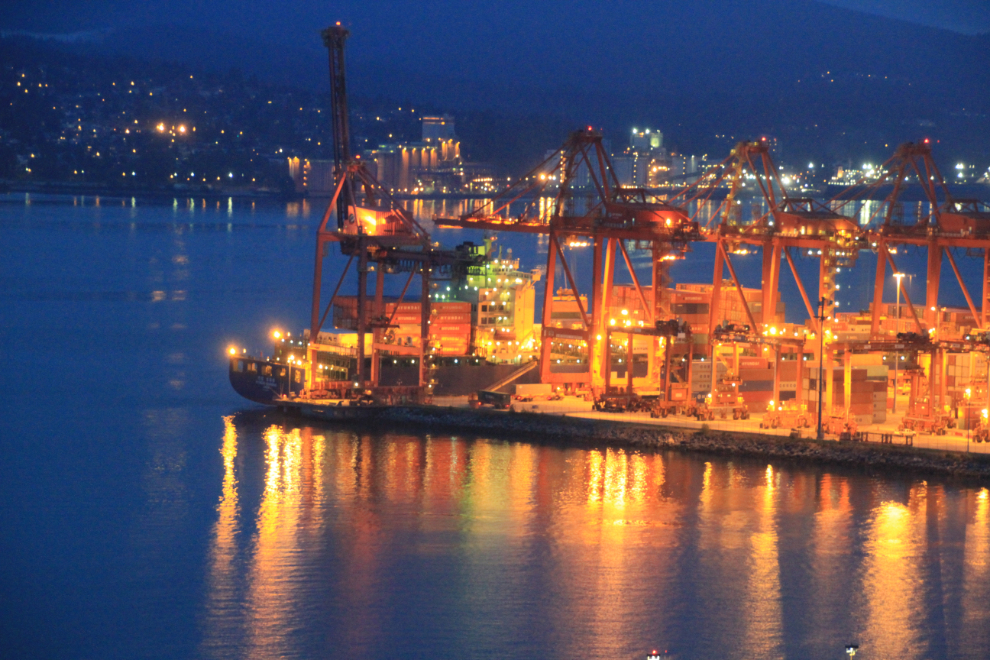Exploring Vancouver’s Chinatown
Thursday was our last day to tour Vancouver before boarding our cruise ship, and it was only a partial day as we had to change hotels and then meet our friends from Ontario mid-afternoon. As a result, Chinatown, and in particular the Dr. Sun Yat-Sen Gardens, were our primary focus.
This was the view from our room at the Westin Bayshore at 05:40 am, with a light rain falling.
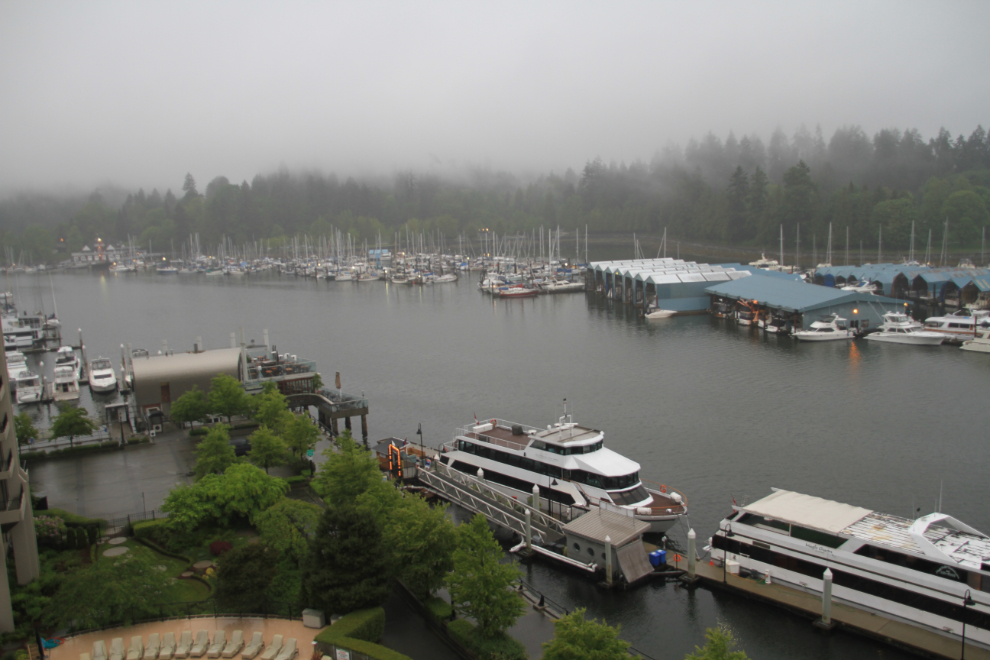
We enjoyed the excellent buffet breakfast in the hotel’s Currents restaurant, then had a look around the property, which we were in no hurry to leave. By 09:00 when this photo was taken from inside the lobby, the rain had stopped.
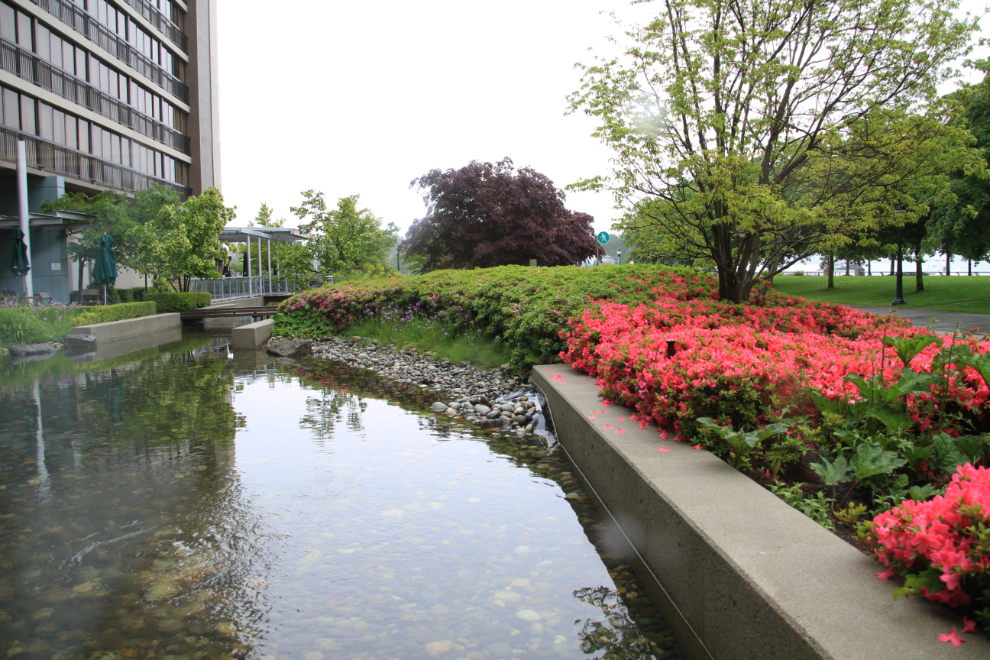
Nanook got one more look at Coal Harbour, then we got a taxi to take us the mile or so to the Delta Vancouver Suites.
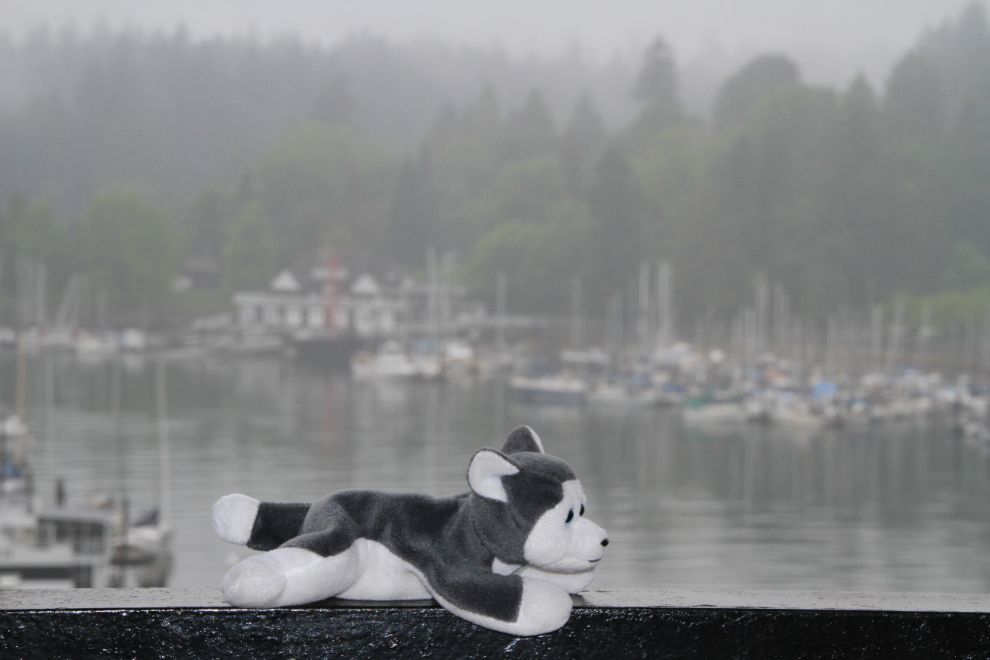
Checking in at the Delta, we were offered an upgrade for $25 and we accepted it for all 3 couples. This got us a harbour-and-city-view corner suite on the 22nd floor as well as other amenities, an excellent deal.
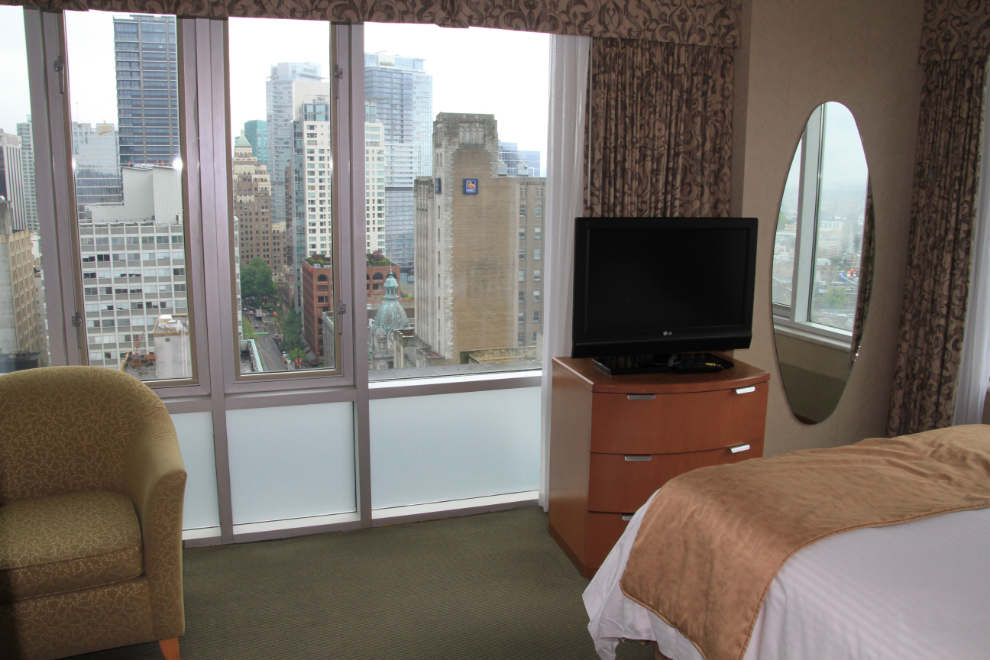
We didn’t get away on our short walk to Chinatown until almost 1:00 pm. This part of Vancouver has lots of photo subjects.
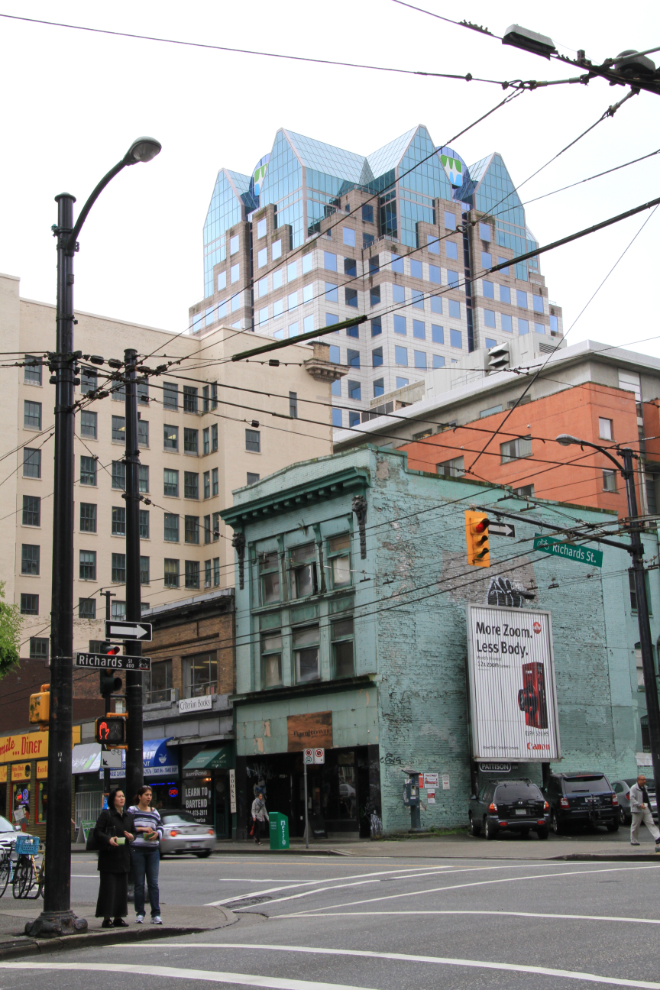
The Millennium Gate on Pender Street is the official gateway to Canada’s largest Chinatown. While it’s still interesting, it’s nowhere near as interesting as it was 30 years ago – new sign laws resulted in many of the large neon signs being removed, and the Chinese community has dispersed around Greater Vancouver a great deal since then.
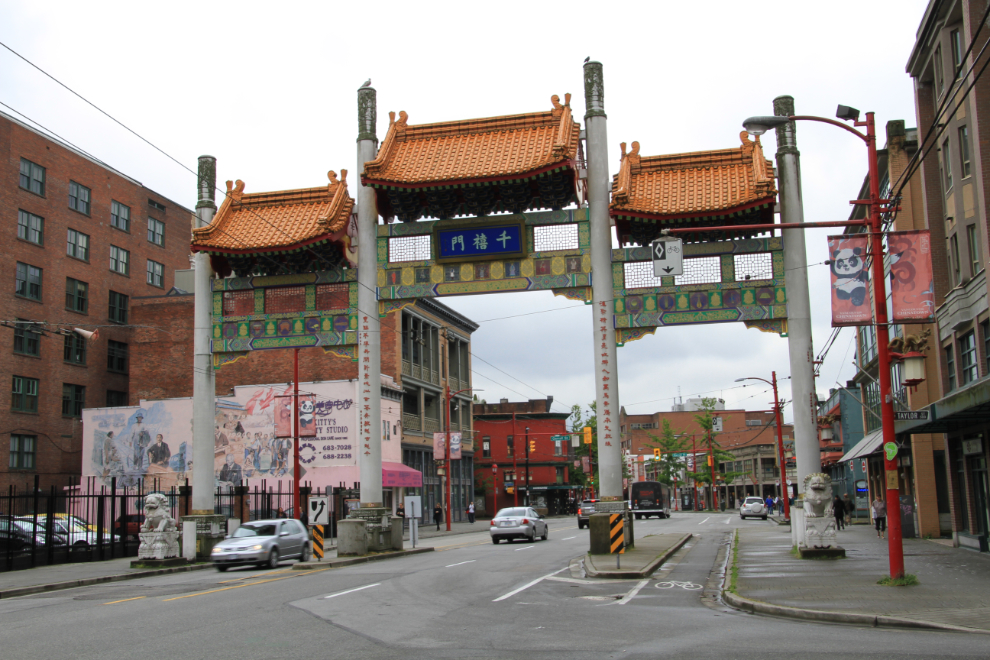
Dr. Sun Yat-Sen is credited with leading the 1911 revolution that finally overthrew the Qing dynasty. He became the first president of the Republic of China in 1912, but resigned shortly after to devote his efforts to the economic development of China. Since his death in 1925, Dr. Sun Yat-Sen has become a symbol of modern China, and he’s known as Guo Fu, the Father of the Country. This is the entrance to the public park section of the garden.
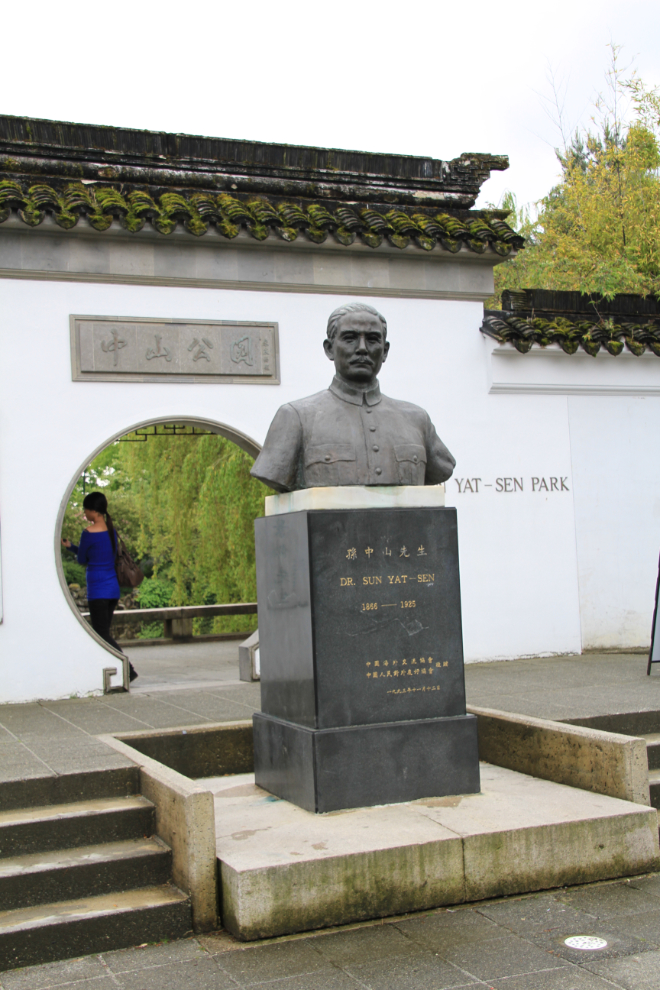
It’s beautiful, but has a very different feel to that of the Nitobe Japanese Garden that we visited on Tuesday.
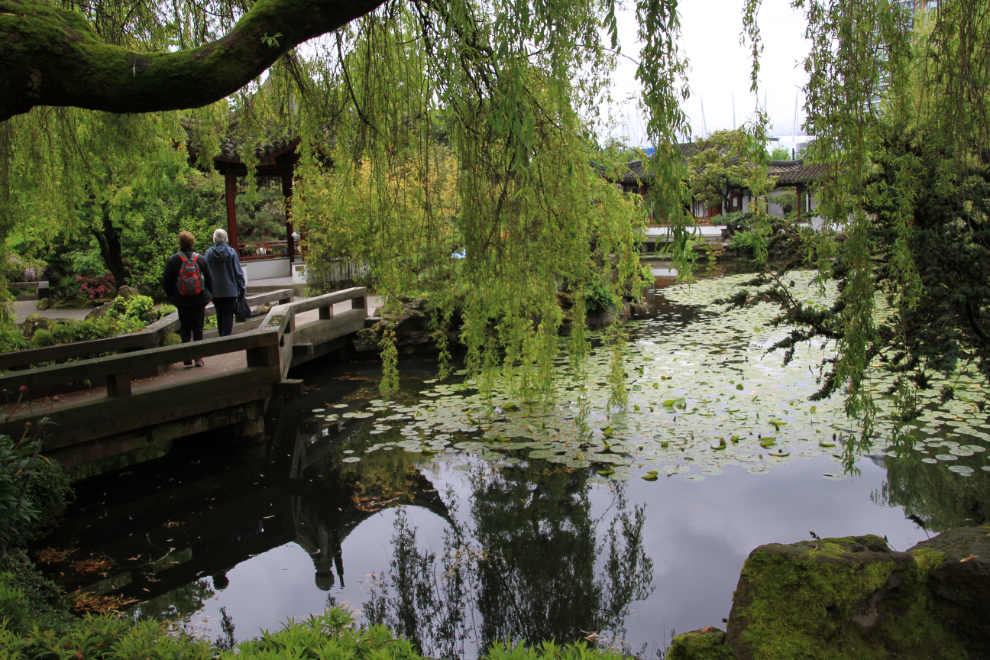
This Canada goose seems to appreciate the peaceful nature of the place as a place to raise her new family.
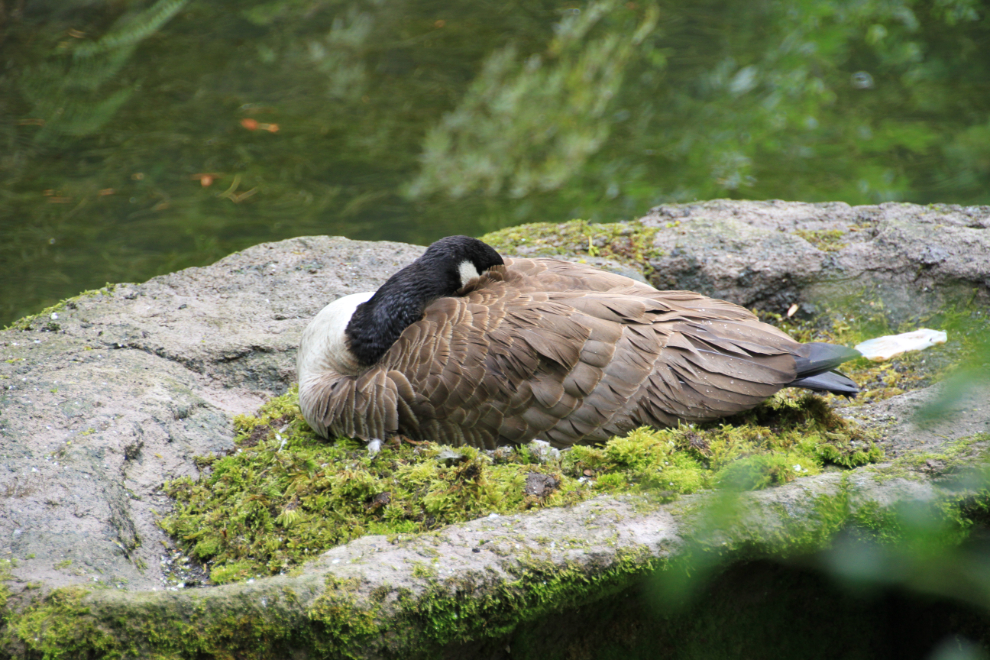
A short section of the trail goes through a bamboo forest.

Koi swim in the main pond. A traditional Chinese garden balances four elements – water, rocks, plants and architecture – in ways that reflect the Taoist belief in Yin and Yang, the opposites that must be in balance to create harmony.
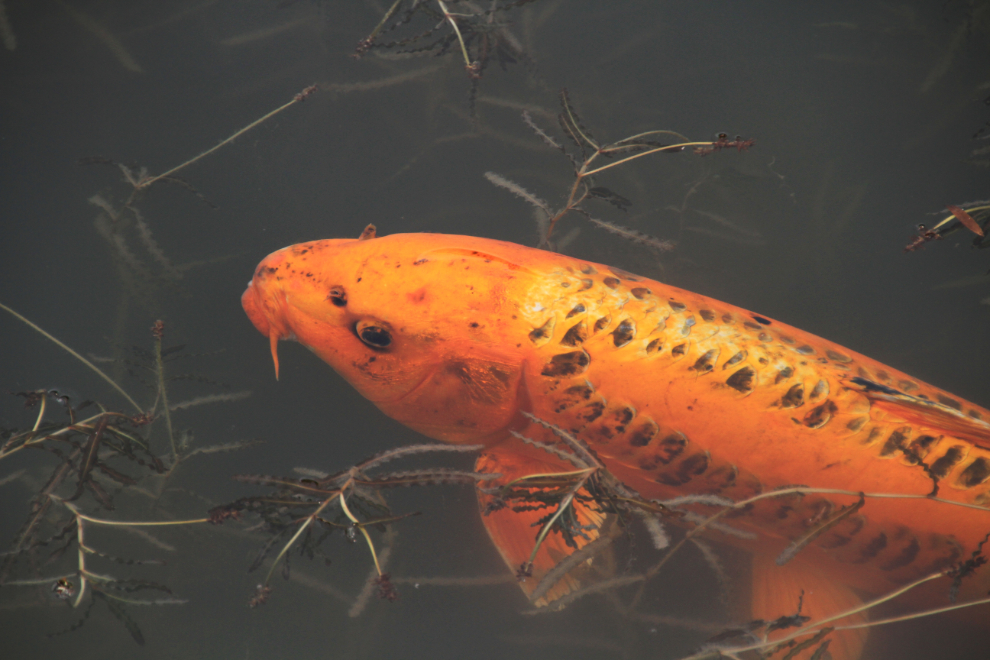
There were a fair number of people in the park but it wasn’t crowded ad it was still peaceful.

The Pacific dogwod is the provincial flower of British Columbia – this pink dogwood isn’t native to the province.
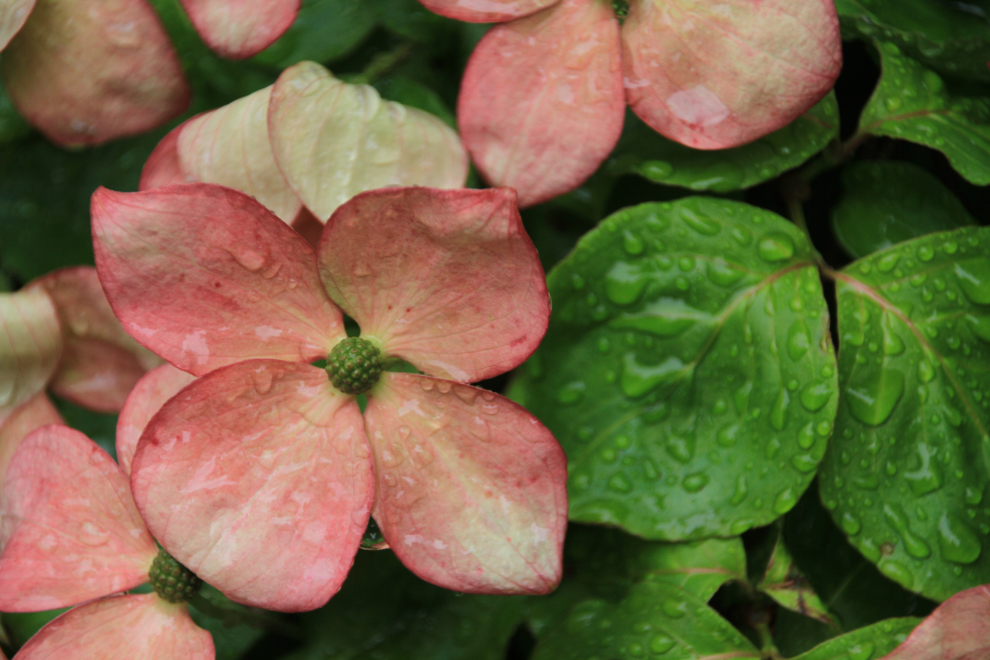
From the public park we went next door to take an educational tour of the formal “scholar’s garden”. Admission is $14 for adults.

Our guide did a good job of explaining the history of, and the principles behind classical Chinese garden design.
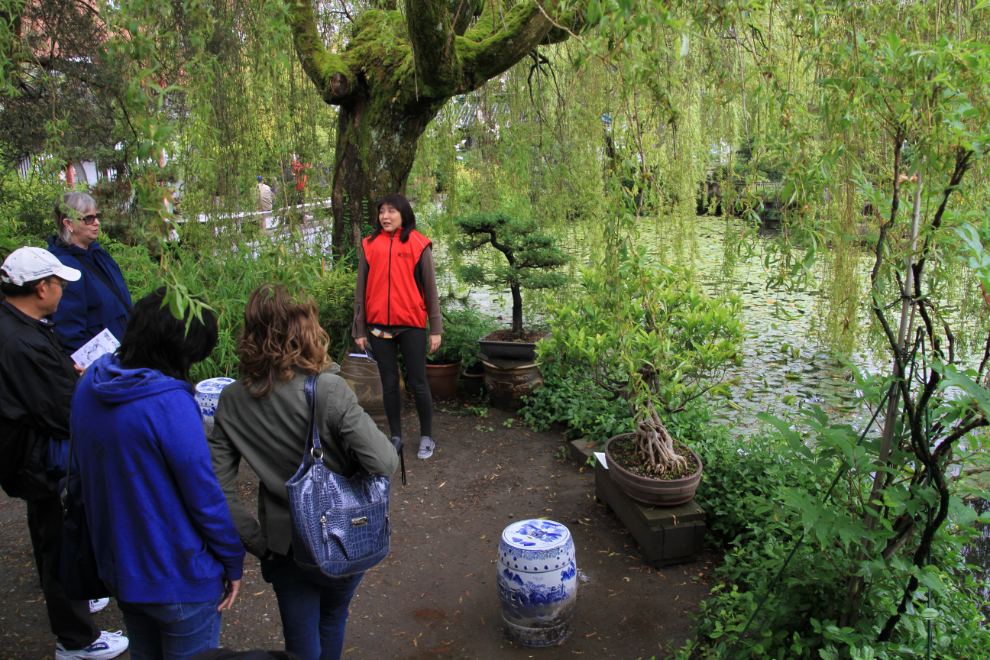
Soft ginko wood is used for frames and other details that require carving – some are very large and elaborate and must have taken hundreds of hours to complete.
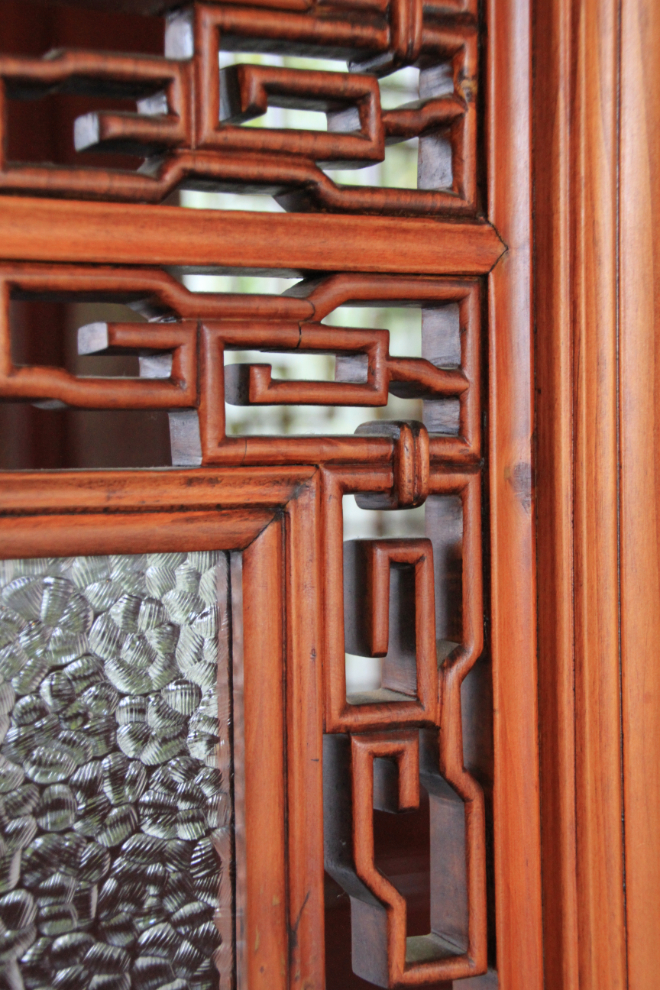
Various elements display the Yin and Yang – in the patio design, rounded rocks balanced by jagged ones, white ones by black ones, natural rocks framed by pottery.
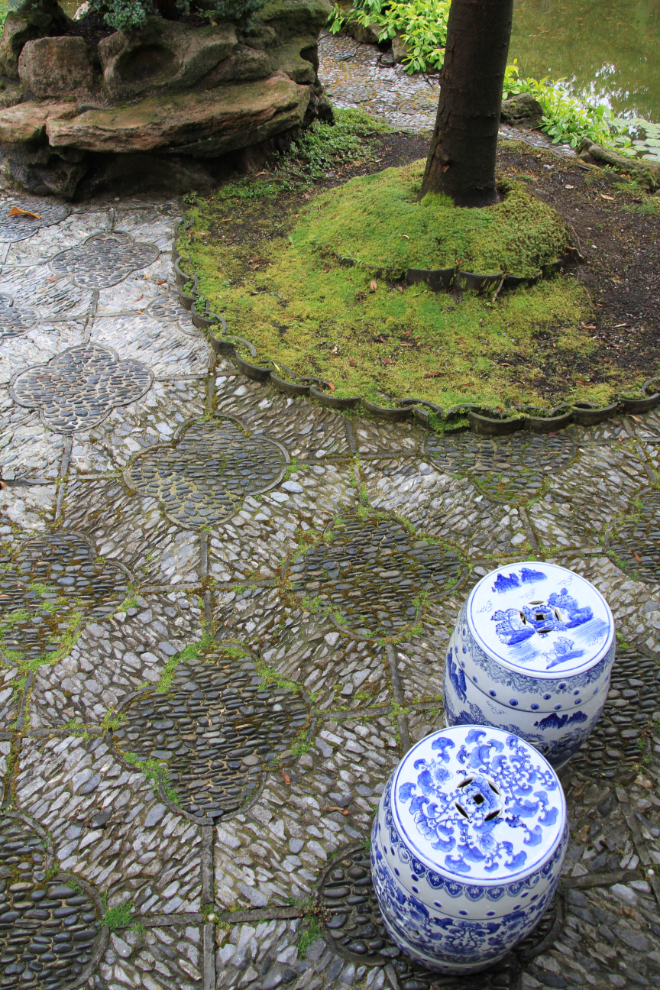
This is probably the most-photographed scene in the garden.
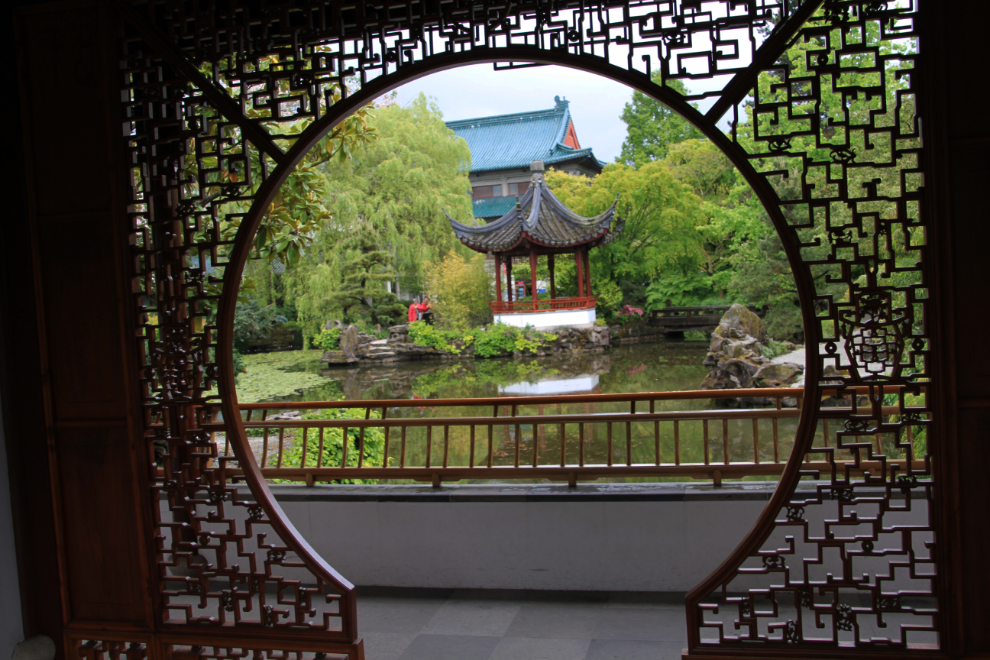
After the garden tour, we walked a few blocks through Chinatown. This is the shallowest commercial building in the world, the 4’11” (1.50 m) deep Sam Kee Building.
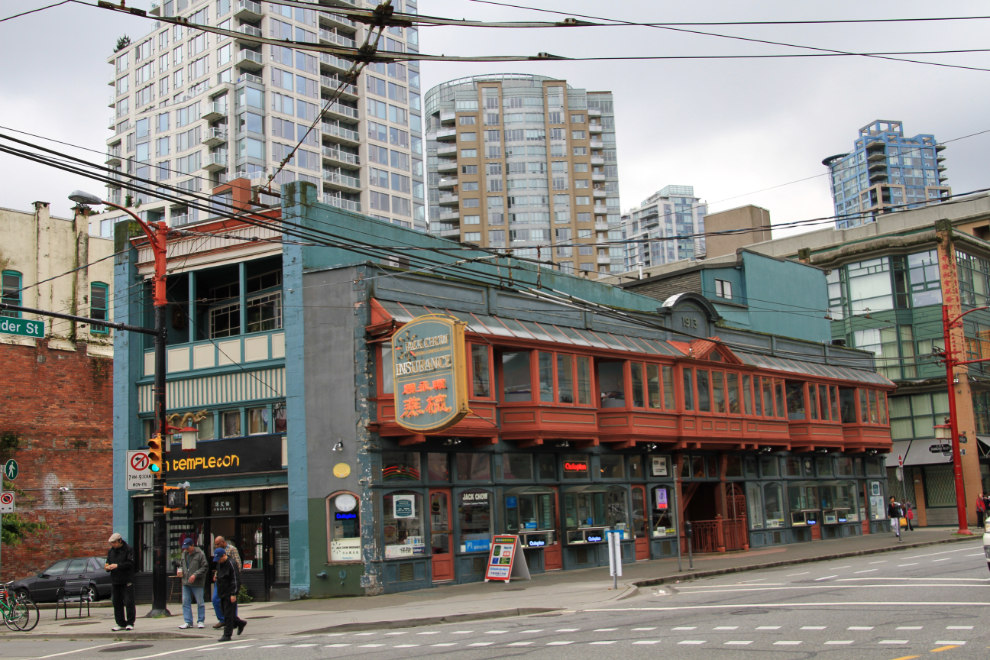
Looking back down Pender to the Millennium Gate, with the historic Sun Tower behind.
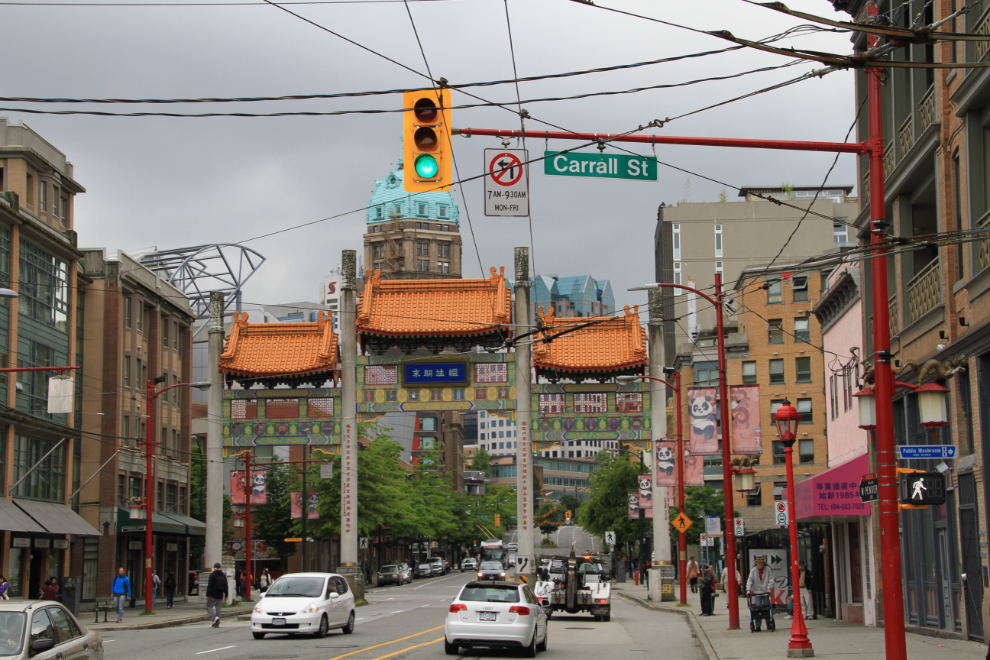
Details on the Sun Tower.
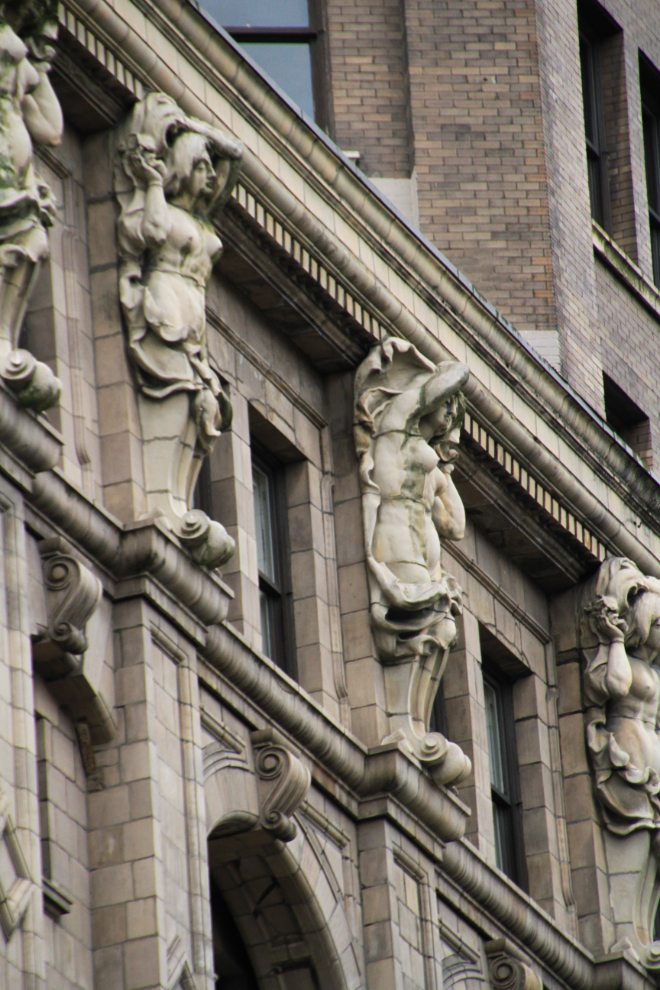
We were back in our suite just before 3:30. This is our view of the container port.
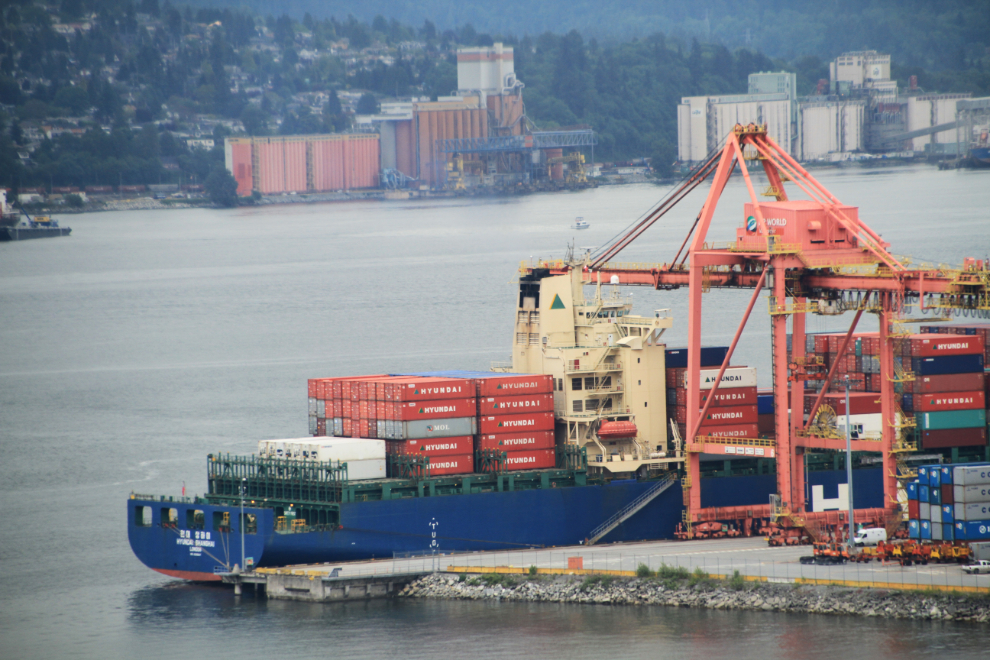
This comfortable lounge is always stocked with coffee and fruit, as well as serving a continental breakfast, and snacks in the early evening.
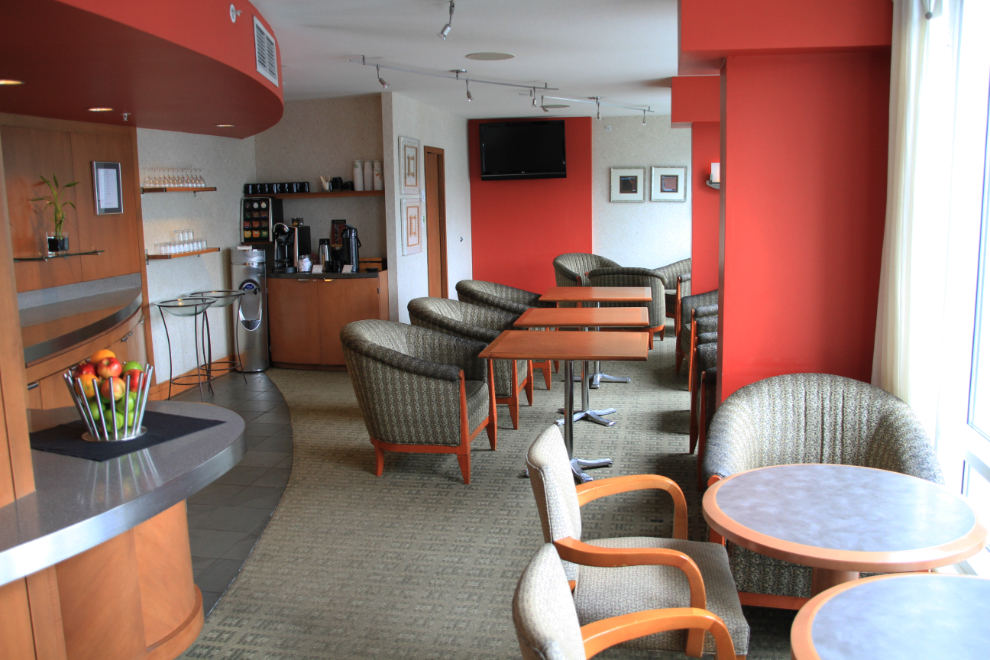
Progress – the fishing fleet in the foreground gets smaller and smaller, the container port gets larger and larger.
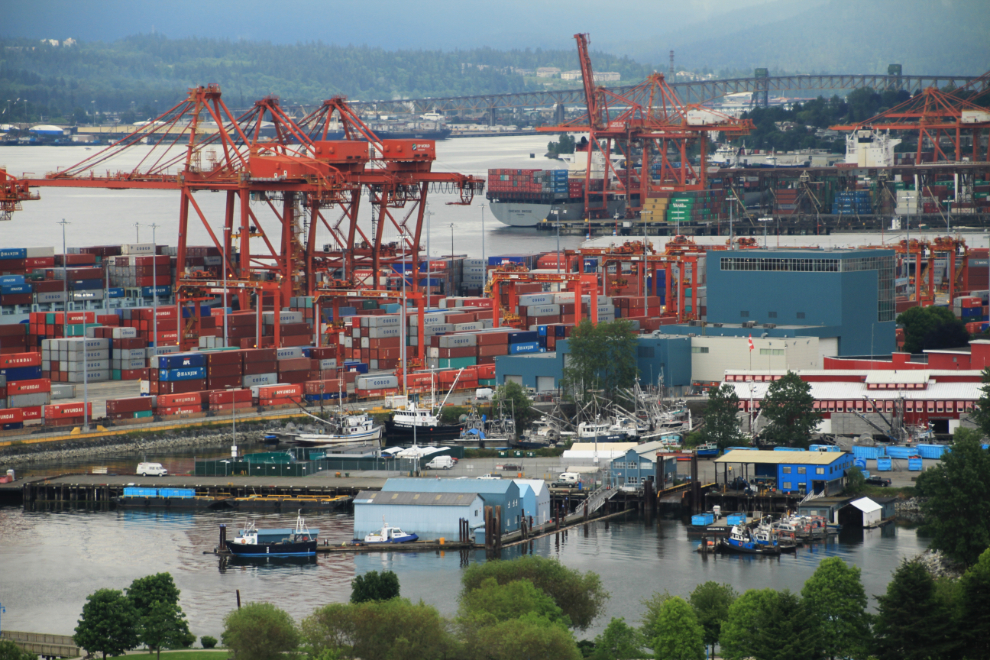
Our friends arrived just after 4:00. We went out for an excellent dinner at the Water Street Cafe, a few blocks away in the historic Gastown district, then called it a day – Friday is a busy day.
A final look at the container port at 9:35 pm.
